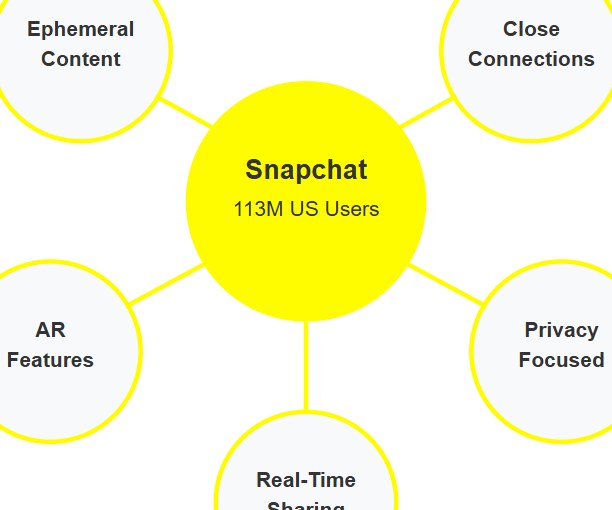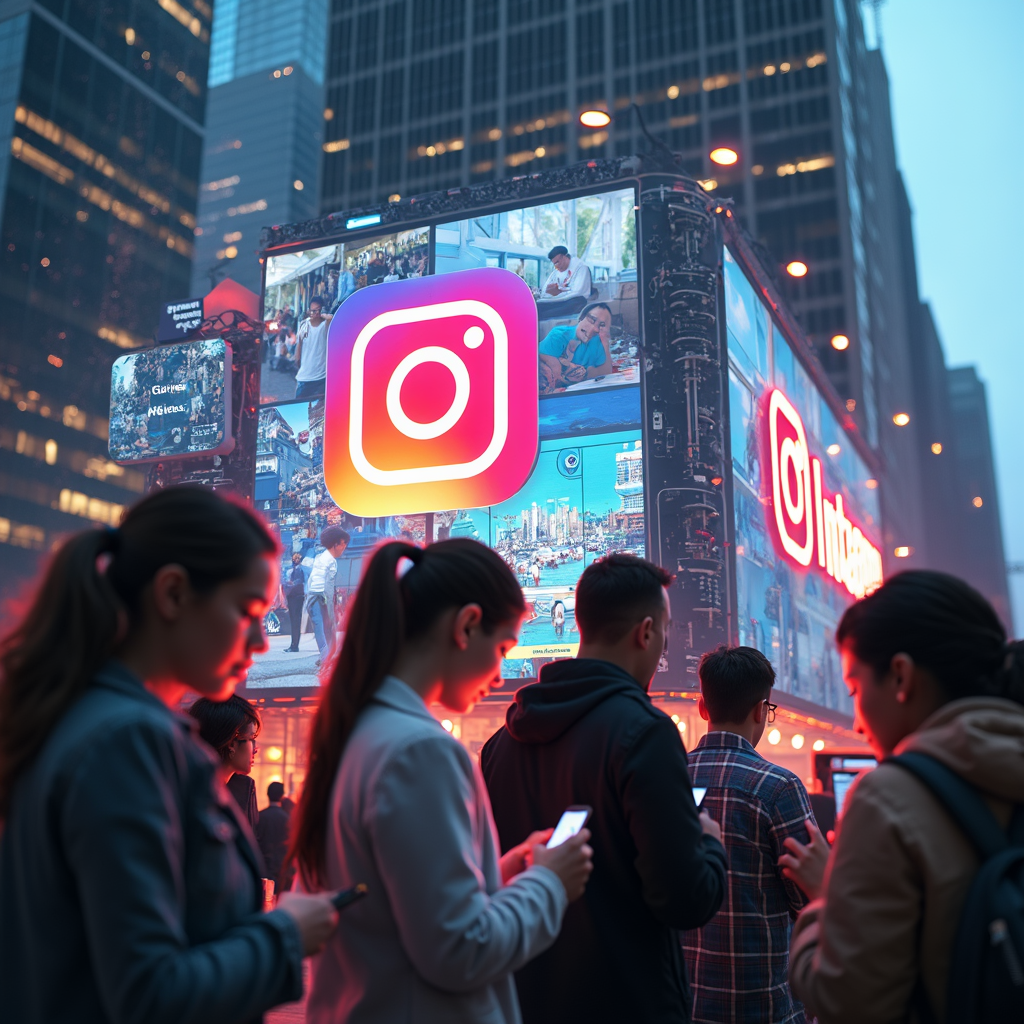In an era dominated by TikTok’s meteoric rise and Instagram’s visual dominance, Snapchat continues to maintain a significant position in America’s social media landscape. With 113.3 million projected users by 2028 and a unique value proposition centered on ephemeral content, Snapchat demonstrates remarkable staying power despite intense competition. This analysis explores why the platform remains relevant to millions of Americans and how it has evolved to meet changing user preferences.
Snapchat’s Enduring User Base in America
Snapchat has established a substantial and steadily growing presence in the United States, with user numbers projected to increase from 107.61 million in 2024 to 113.3 million by 2028. This represents a 5.3% growth over the four-year period, demonstrating the platform’s continued relevance despite being one of the more mature social networks.
Snapchat maintains a strong awareness level with 91% of social media users in the US recognizing the platform. However, its usage rate stands at 31%, indicating a notable gap between awareness and active engagement. This suggests both a challenge and an opportunity: while many Americans know about Snapchat, converting awareness to consistent usage remains a hurdle.
Snapchat’s Demographic Sweet Spot
Snapchat maintains a distinct demographic profile that contributes significantly to its enduring popularity. The platform appeals particularly to younger audiences, though its user base has expanded beyond its initially teen-focused origins.
Gender Distribution
Snapchat’s audience in the United States shows a moderate female majority, with 54.7% women and 45% men. This gender balance has remained relatively consistent in recent years, reflecting the platform’s broad appeal across gender lines while maintaining a slight female skew.
Age Demographics
While specific age data is limited in the report, Snapchat’s audience concentration appears strongest in the 13-24 age range, where it maintains particular relevance. This demographic strength is evidenced by:
- 74% of Gen Z (aged 16-25) using Snapchat
- High usage rates among 13-17 year-olds
- Significant adoption among college students (18-22)
This younger demographic concentration represents both Snapchat’s greatest strength and its most significant challenge as it works to broaden its appeal to older users while maintaining its core youth audience.
Engagement Metrics and Revenue Performance
Despite fierce competition for user attention, Snapchat manages to generate meaningful engagement and, consequently, revenue from its user base.
Key Engagement Metrics:
- 7 hours and 22 minutes spent monthly per user
- 156 weekly notifications received by Gen Z users
- 3.3 million Snaps sent per minute globally
- Average of 40+ Snaps sent daily by active users
While Snapchat’s engagement time (7:22 hours/month) is significantly lower than TikTok’s (43:53) and YouTube’s (24:43), it represents a substantial commitment from users, particularly given the platform’s ephemeral nature.
Revenue Performance
Snapchat’s North American revenue has grown significantly over the years:
- 2019: $1.07 billion
- 2020: $1.65 billion
- 2021: $2.87 billion
- 2022: $3.21 billion
- 2023: $2.95 billion
The slight revenue decline in 2023 reflects broader challenges in the digital advertising market rather than user engagement issues. The platform’s average revenue per user (ARPU) in North America stood at $9.73 in Q4 2024, demonstrating its ability to monetize its user base effectively.
Snapchat’s Core Value Propositions
Snapchat’s continued relevance in the U.S. social media ecosystem stems from several key differentiating factors that resonate with its user base.
1. Ephemeral Content
At its core, Snapchat pioneered the concept of disappearing content. This fundamental feature creates several advantages:
- Reduced self-consciousness about posting
- Lower pressure for perfection
- Creation of FOMO (fear of missing out)
- Encouragement of frequent, casual sharing
While stories and temporary content have been adopted by nearly every major platform, Snapchat maintains its identity as the original ephemeral platform, offering a more authentic, less curated experience than competitors.
2. Close Connections
Snapchat fosters intimate connections between smaller groups of friends:
- Average of 20-30 friends per user (vs. hundreds on other platforms)
- Private messaging as a primary function
- Content primarily shared with close connections
- Emphasis on one-to-one and small group communication
This focus on close relationships differentiates Snapchat from broadcast-oriented platforms like TikTok and Instagram, where content is primarily created for public consumption.
3. Augmented Reality Features
Snapchat has established itself as a leader in consumer AR:
- Pioneered face filters and lenses
- Continuous innovation in AR capabilities
- Over 250,000 lens creators
- AR shopping experiences with major brands
These features provide playful, creative tools that enhance user engagement and differentiate the platform from text or traditional image-based competitors.
4. Privacy-Focused Design
In an era of increasing privacy concerns, Snapchat’s design principles offer users a sense of control:
- Screenshot notifications
- Ephemeral nature reduces digital footprint
- Less emphasis on public profiles
- Smaller, more trusted networks
5. Real-Time Sharing
Snapchat encourages immediate, authentic moments rather than carefully crafted content:
- Location sharing with friends
- Real-time status updates
- Snap Map for contextual awareness
- Bitmoji representations of live activity
Geographic and Global Context
While this analysis focuses on Snapchat’s U.S. presence, it’s worth noting the platform’s global footprint as context. As of April 2024, Snapchat’s global distribution presents an interesting contrast:
- India: 202.51 million users
- United States: 106.7 million users
- Pakistan: 31.93 million users
- France: 27.5 million users
- United Kingdom: 23.06 million users
This global profile demonstrates that while Snapchat faces intense competition in the U.S., it has successfully expanded its international presence, particularly in emerging markets.
Competitive Challenges and Adaptive Strategies
Snapchat faces significant competitive pressure in the U.S. market from Instagram, TikTok, and other platforms that have incorporated similar features. However, the company has implemented several strategies to maintain its relevance:
Content Partnerships
- Expanded Discover content with premium publishers
- Original programming designed for mobile viewing
- News and entertainment content tailored to younger audiences
Platform Evolution
- Introduction of Spotlight (TikTok-like short-form video section)
- Development of Snap Games for in-app gaming
- Addition of permanent public content options while maintaining ephemeral core
Advertising Innovations
- Enhanced AR advertising capabilities
- Improved targeting and measurement tools
- Shopping features and commerce integration
Developer Ecosystem
- Snap Kit for third-party integrations
- Snap Camera for desktop
- Camera Kit for embedding Snapchat AR in other apps
Future Outlook
Looking ahead to 2028, Snapchat faces both opportunities and challenges in maintaining its position in the U.S. social media landscape.
Growth Opportunities:
- Expanded AR applications beyond filters
- Further development of social commerce
- Continued appeal to privacy-conscious users
- Integration with emerging hardware (AR glasses)
- Retention of Gen Z users as they age into higher spending demographics
Potential Challenges:
- Maintaining distinctiveness as competitors adopt similar features
- Navigating platform fatigue among younger users
- Competing for advertising dollars with larger platforms
- Balancing innovation with core appeal
- Expanding beyond its youth-oriented image without alienating core users
Conclusion
Snapchat’s resilience in the U.S. social media landscape stems from its unique positioning at the intersection of private messaging, ephemeral content, and augmented reality. With 113 million projected users by 2028 and strong engagement metrics, the platform has demonstrated staying power despite fierce competition.
The platform’s success lies in understanding its core value propositions and steadily evolving without abandoning them. While it may not match the engagement hours of TikTok or the broad demographic reach of Facebook, Snapchat has carved out a sustainable niche by focusing on authentic communication and close connections.
For marketers targeting younger demographics, particularly Gen Z, Snapchat remains an essential channel. Its engaged user base, augmented reality capabilities, and premium content offerings provide unique opportunities for brand engagement that complement broader social media strategies.
As the platform continues to evolve, its challenge will be maintaining the authenticity and privacy focus that differentiate it while adapting to changing user preferences and technological capabilities.
This concludes our four-part analysis of mobile social media usage in the United States. Through examining the digital landscape broadly and exploring Instagram, TikTok, and Snapchat specifically, we’ve provided a comprehensive view of how Americans engage with social platforms in 2024.Retry



